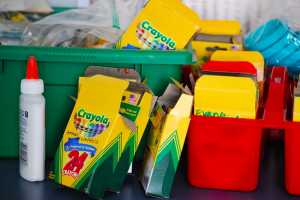
Your kids are going back to school. This means the hours you spend in the car has just significantly increased. Driving from school to baseball to ballet practice will stack up the time spent driving your automobile. Here are a few tips to get your car as ready for back to school as your kids are.
Check the vitals under the hood. To help prevent maintenance issues or potentially costly repairs, mechanics suggest opening the hood of your vehicle and checking the following:
- Fluid levels of engine oil, coolant and transmission, and brake and power steering fluid—your owner’s manual will illustrate where everything is located and the proper levels to maintain.
- Battery
- Date of the battery (located on top). Consumer Reports suggests that you have your battery checked if it’s more than two to three years old and your car’s entire charging system checked once a year.
Check the tires. Check the tires for uneven tread wear, nails or other potential hazards. Road &Travel magazine says one easy way to check tread depth is inserting a penny into a groove—if any part of Abe Lincoln’s head is obscured, you have enough tread. Check the pressure on each tire with a gauge when they’re cold (not driven).Follow the vehicle manufacturer’s suggested pressure, which is located on most vehicles on a sticker inside the driver’s door, center console, glove compartment lid or in the owner’s manual. Also, make sure the spare tire is inflated and a jack, lug wrench and jumper cables are in the trunk.
Check the lights. This is a good time to get your teen involved in the preventive maintenance checklist review. Have him or her get in the car and turn on the headlights, turn signals and emergency flashing lights as you walk around the vehicle to make sure they are working. Check the brake lights by having him or her press the brake pedal, too.
Find local resources for students going away. Maintenance issues still can occur despite your preventive maintenance efforts, so it’s wise to identify resources near campus. Find a trusted mechanic or local dealership that services your type of vehicle, as well as a tire store. If your driver is college-bound, the university itself can be helpful, too, so touch base with its parking services or safety department. They may have suggestions for local car services and can offer helpful services themselves. For example, the University of Louisville has a Motorist Assistance Program that offers 24/7 help on campus for things like a dead battery, flat tire or empty gas tank.
If you have any concerns after your own inspection, having a qualified mechanic perform a safety check can help minimize maintenance issues and get your student on the road to a fantastic school year.
You can learn more at AllState.
